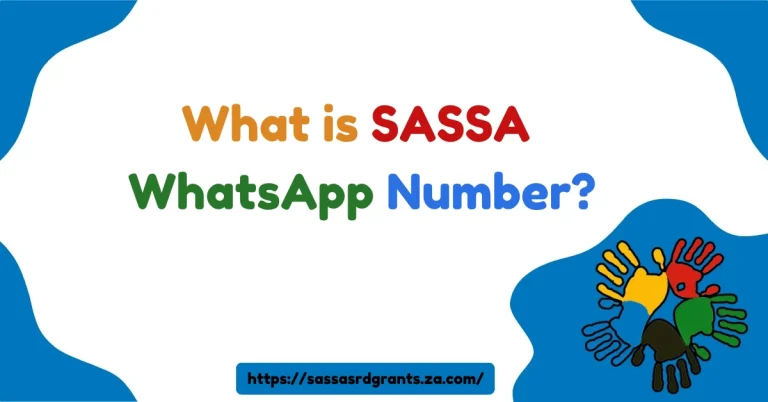How to Survive a Month With SASSA Grant as a Family?
Living on a SASSA grant can feel challenging, especially when supporting a family on a limited budget.
In this guide, I’ll share practical tips and strategies for making the most of your grant, from effective budgeting to stretching your resources and finding ways to reduce costs.
Whether you’re relying on the Old-Age Grant, Child Support Grant, or another form of financial support, the following strategies will help you cover essential expenses and ensure your family’s needs are met.
How to Survive a Month With SASSA Grant as a Family (Quick Answer)
To make it through the month on a SASSA grant, create a monthly budget that prioritizes essential expenses like food, rent, and utilities. Reduce costs by buying in bulk, cooking at home, and using public transport. Explore ways to supplement your income, like side jobs or freelancing, and plan for the future by saving for emergencies and investing in skills or education.
Understanding SASSA Grants and Their Amounts
Before planning your budget, it’s helpful to understand the specific SASSA grant amount you receive. Different grants provide different levels of support, and knowing your exact grant amount helps in setting a realistic budget.
Common SASSA Grant Types and Their Amounts:
| Grant Type | Previous Amount (April 2024) | New Amount (October 2024) | Increase |
|---|---|---|---|
| Old-Age Grant (Ages 60-74) | R2,180 | R2,190 | R10 |
| Old-Age Grant (Ages 75+) | R2,200 | R2,210 | R10 |
| Disability Grant | R2,180 | R2,190 | R10 |
| Care Dependency Grant | R2,180 | R2,190 | R10 |
| War Veterans Grant | R2,200 | R2,210 | R10 |
| Child Support Grant | R530 | R530 | No Increase |
| Foster Care Grant | R1,180 | R1,180 | No Increase |
| Social Relief of Distress | R370 | R370 | No Increase |
With these figures, it’s clear that budgeting is essential to making these funds last throughout the month.
Creating a Monthly Budget
A monthly budget can be the backbone of managing a limited income. It enables you to control spending, prioritize essential needs, and track where every rand goes.
Here’s a step-by-step guide on creating a budget that works.
Step 1: List All Sources of Income
First, determine your total monthly income. Start with your SASSA grant amount, and then include any additional income sources, such as side jobs, family contributions, or child support. Knowing your exact income gives a clear picture of what you have available to cover your expenses.
Step 2: Identify Fixed and Variable Expenses
Categorize your expenses as fixed or variable:
- Fixed Expenses: These are monthly costs that generally stay the same, like rent, school fees, and transportation.
- Variable Expenses: These fluctuate and include things like groceries, medical bills, and home maintenance.
Step 3: Prioritize Essential Costs
Focus your budget on essential expenses such as food, utilities, housing, and education. Non-essential expenses can be covered with any remaining funds after your core needs are addressed.
Step 4: Stick to Your Budget
Once your budget is in place, the challenge is following it. Keep track of daily spending using a notebook or a mobile app, ensuring that you don’t overspend on non-essentials. Consistency is key to making your SASSA grant last.
Tips for Stretching Your SASSA Grant
To maximize your SASSA grant, consider these money-saving techniques:
1. Practice Smart Shopping Habits
Managing grocery expenses is one of the best ways to stretch your grant. Here are tips for efficient shopping:
- Avoid Buying Extra: Stick strictly to your list to prevent buying items you don’t need.
- Buy in Bulk: Stock up on non-perishable essentials in bulk for savings.
- Look for Discounts: Always shop at stores that offer discounts or specials on basic items.
- Cook at Home: Avoid eating out, as preparing meals at home is generally more cost-effective.
- Grow Your Own Food: If space allows, consider growing vegetables or herbs to save on grocery costs.
2. Reduce Household Costs
Aside from groceries, you can also find ways to lower other household expenses:
- Cut Electricity Usage: Turn off unused lights, unplug appliances, and switch to energy-saving devices.
- Reduce Water Consumption: Fix leaky taps and use rainwater for gardening to lower your water bill.
- Save on Transport: Use public transport or carpool to cut down on travel costs. Walk or cycle for short trips to save even more.
- Lower Communication Costs: Use free messaging apps and public Wi-Fi to minimize mobile data expenses.
3. Manage Health Expenses
Healthcare costs can be challenging, but there are ways to keep these expenses under control:
- Public Healthcare: Utilize government clinics and hospitals, which tend to be more affordable than private healthcare providers.
- Basic Health Insurance: Consider a basic insurance plan if possible to cover unexpected medical costs.
- Preventive Health: Eating well and exercising regularly can reduce health issues and related expenses.
4. Lower Education Costs
Education is crucial, but it doesn’t have to be expensive. Here are ways to save on schooling:
- Public Schools: Enroll children in public institutions, which are generally more affordable than private schools.
- Scholarships: Look for scholarships from government or private organizations to help with education costs.
5. Explore Additional Income Sources
If possible, supplement your SASSA grant with other sources of income:
- Side Jobs: Part-time work or small businesses, such as selling homemade goods, can provide extra funds.
- Freelancing: Offer services online if you have skills like writing, tutoring, or graphic design.
Planning for the Future
Even on a limited budget, it’s wise to set aside funds for future needs. Here’s how to secure your family’s financial future:
- Build an Emergency Fund: Save a small amount each month for unexpected expenses.
- Invest in Education and Skills: Pursuing education or training can enhance your long-term income potential.
- Save for Big Goals: Even small savings can eventually help achieve larger goals, like buying a home or starting a business.
Conclusion
Living on a SASSA grant requires careful planning and disciplined spending. By creating a budget, prioritizing essentials, and cutting unnecessary costs, you can stretch your resources throughout the month.
Remember to find ways to save, explore additional income sources, and invest in the future. With the right strategies, you can enhance your family’s financial stability while relying on a SASSA grant.
Frequently Asked Questions (FAQs)
Q: How can I prepare for unexpected expenses on a SASSA grant?
A: Try to save a small amount each month for emergencies. Additionally, seek out local resources for assistance during challenging times.
Q: What side jobs can help me earn extra income?
A: Consider freelance work, tutoring, or a small business that matches your skills, such as selling handcrafted items or online services.
Q: Can I invest in my future while living on a SASSA grant?
A: Yes! Even small investments in skills or education can improve your earning potential in the long run.
With these steps, you’ll be better equipped to manage on a SASSA grant while meeting your family’s essential needs.






